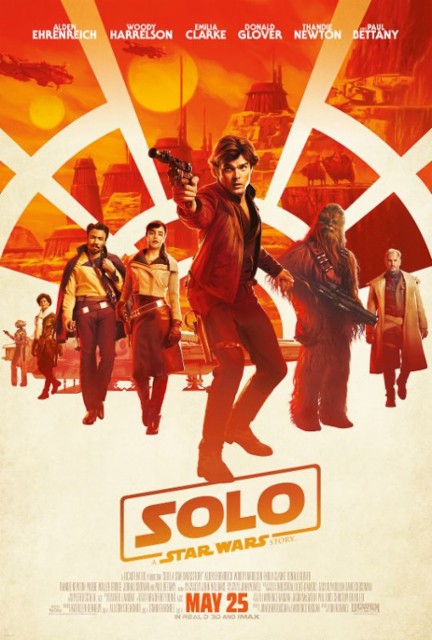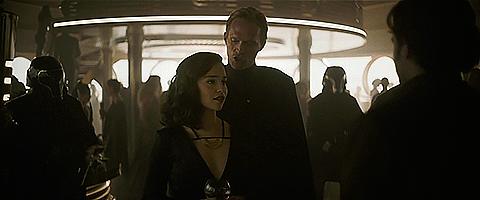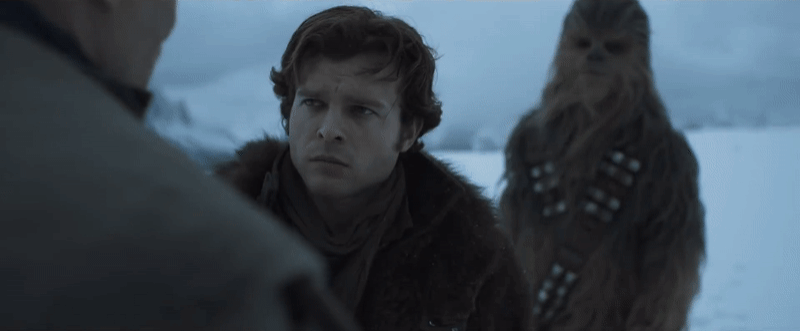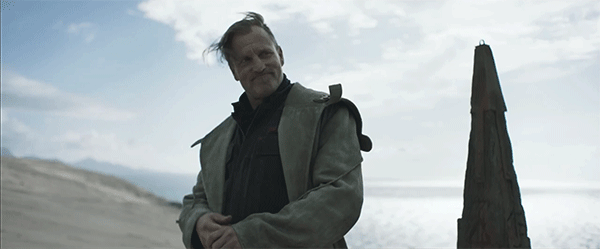8 Key Archetypes of the Hero’s Journey
Archetypes are something we experience every day…
An older coworker passing along important tips at your new job or a friend turns out to be talking behind your back. Most of us can recognize these as archetypes, but can we apply these familiar patterns to our fictional worlds and characters? The answer is a resounding yes!
Just as we see these character archetypes mirrored in our own lives, they’ll show up in our storytelling as well. Not only do they provide guidelines for making our characters feel like real people, but they can add a whole new layer of complexity and depth to our stories too.
What Is an Archetype?
Contents
 To start things off, let’s first define what exactly a character archetype is in storytelling:
To start things off, let’s first define what exactly a character archetype is in storytelling:
An archetype is a repeated motif or trait found in storytelling.
Based on that definition, you might initially think of the classic “damsel in distress” or “knight in shining armor” from European fairy tales. Both of these do fall under the umbrella of archetypes, however, these aren’t the archetypes we’ll be exploring here.
Instead, the character archetypes of the Hero’s Journey are universal archetypes, roles all characters can fill at different points along their journey. These archetypes help you flesh out your story with a complete cast, while ensuring no character exists without a purpose.
“The archetypes are part of the universal language of storytelling, and a command of their energy is as essential to the writer as breathing.” – Christopher Vogler, The Writer’s Journey
While most of these ideas originated with Joseph Campbell’s Monomyth and the Hero’s Journey, these eight universal archetypes are actually based on Christopher Vogler’s The Writer’s Journey. This book is beyond excellent, and breaks down the ideas of Campbell into a more usable storytelling guide—versus the highly academic The Hero With a Thousand Faces.
Both books are well worth your time, but we’ll be covering Vogler’s description of character archetypes here.

Of course, throughout this article I’ll assume you have at least a basic understanding of the Hero’s Journey. If you’re not familiar with this story structure, then check out my breakdown of the Hero’s Journey here.
Our Case Study: Solo
 I could have chosen a variety movies for this article, so I promise I didn’t choose Solo just because I recently saw it—though that certainly helped!
I could have chosen a variety movies for this article, so I promise I didn’t choose Solo just because I recently saw it—though that certainly helped!
Rather, Solo is great for studying universal archetypes because each of its characters exhibits archetypal roles in interesting ways. Far from being stereotypes, Solo proves that these universal archetypes are the building blocks for forming unique characters.
For those unfamiliar with the movie, Solo is the origin story of Han Solo from the original Star Wars trilogy—and there will be major spoilers for Solo in this article.
Please enter at your own risk.
If you wish to continue but need a refresher on the plot, check out the Movie Structure Archives entry for Solo. It’ll give you a full breakdown of all the plot points I’ll be referencing here.
The 8 Universal Character Archetypes
The Hero:
You’re likely already familiar with the basics of the Hero archetype. After all, your protagonist will fill this role for most of your story as they overcome their flaws, drive your plot forward, and make important sacrifices.
Ultimately, their decisions will determine the outcome of the Climax.
However, other characters can also wear the Hero archetype at different points in your story. An Ally may become the Hero while your protagonist is incapacitated, or a Trickster may face a sudden change of heart. This dynamic allows other characters to temporarily take the spotlight and fulfill important story functions or resolve subplots.

In our case study, Han Solo fills the role of the Hero, though various Allies such as Val also fill it under special circumstances.
This makes sense because—beyond being on all the posters—this is Han’s journey. He grows the most from beginning to end, and is the catalyst for the movie’s progression. When the cast gets into a tight spot with Dryden Vos, it’s Han’s choices that propel them into the conflict. Not only that, but he is who the audience identifies with the most, meaning he checks all the boxes of the Hero archetype.
Of course, because the Hero is such a central archetype, it also has a whole host of specific traits and trials that go along with it. For more on the Hero’s character arc, check out this article.
The Shadow:
Just as the Hero archetype aligns with your protagonist, the Shadow is linked to your antagonist. This archetype seeks the antithesis of your Hero’s goals, often the destruction of what the Hero wishes to preserve.
Essentially, the Shadow embodies the dark aspects of the Hero.
The Shadow is meant to personify the suppressed wounds and inner struggles that the Hero will need to overcome—and this is why antagonists are often called “foil characters.” They’re a warning about what your protagonist will become if they fail to learn.
Of course, just like many characters can act as the Hero, many characters take on aspects of the Shadow. Your Hero may behave like the Shadow in moments. Allies, Heralds, and Threshold Guardians may do so as well, allowing you to create depth in characters that have thus far served only one purpose.

In Solo, Dryden Vos—from his name to his appearance and demeanor—screams antagonist. Because of this, it’s fairly obvious that Vos serves as the Shadow for most of the story.
However, he’s not the only character who plays this role.
While it’s easy to see Vos as the Shadow, Qi’ra actually fills this archetype in an even more crucial way. You see, Qi’ra’s role as a Shadow is intrinsically tied to Han’s character arc. Both begin from the same place and both are seeking to escape to a better life, but where Han’s journey molds him into a Hero, Qi’ra becomes a Shadow. This is a powerful contrast, and one we’ll be returning to later in the article.
The Mentor:
Acting as the Hero’s main guidance throughout their journey, the Mentor comes in many forms, but they always serve a critical purpose.
An elderly woman giving a soon-to-be bride a magic mirror to see the true face of her new husband or a veteran sports coach training young players both embody the Mentor archetype. This archetype is there to equip the Hero through knowledge, encouragement, and skills that allow them to overcome the conflict of the story and eventually surpass their flaws.
Of course, Mentors are a great opportunity to add depth to a story.
Because of this, Mentors often take on aspects of Threshold Guardians as Heroes prove their worth in exchange for help. Meanwhile, Shadow Mentors may seem to guide the Hero while actually misleading them—sometimes maliciously, sometimes mistakenly.

For example, while Han works under the guidance of a variety of Mentors throughout Solo, Tobias Beckett fills this role most often. He guides Han in how to deal with Vos, he teaches Han about this new world of crime, and he encourages Han at every step to leave it. Tobias clearly wears the mask of the Mentor archetype, but we’ll be coming back to him soon, as that isn’t the only archetype he wears.
The Ally:
The third of the well-known archetypes, Allies are seen in every story.
After all, Heroes need a friend to lean on, someone to lighten the load of the journey or to practice their growing skills with. That’s the role of the Ally, seen through characters like Samwise Gamgee in The Lord of the Rings, or Toto in The Wizard of Oz.
Because of how broad this archetype is, it serves many functions and can take on the aspects of many other archetypes. An Ally might act as a Mentor or may descend into a period of being a Shadow or Trickster. Thanks to this complexity, Allies are a great tool for humanizing your Hero, relieving tension, and furthering explore your story’s themes through subplots.

Fortunately, Ally archetypes are usually easy to identify, and primary Ally for Han is Chewbacca.
Audiences knew Chewie well before the story of Solo began, and he has served the same Ally role throughout the Star Wars series. Chewie is someone for Han to banter with and rely on, and he ends the movie as Han’s only lasting companion. While other characters such as Lando and Qi’ra wear the Ally archetype for only a short period of time, Chewie remains an Ally archetype for the entirety of Han’s life.
The Threshold Guardian:
Often an aspect of the Shadow, Threshold Guardians are there to represent the fears of your Hero and to challenge them as they progress along their journey. Of course, much like the midterm exams you may have had in school, Threshold Guardians aren’t the final test. Still, without your Hero proving they’ve mastered their new skills, these Guardians will prevent them from reaching their final test at all.
While Threshold Guardians are often henchmen of the Shadow, Mentors and Allies can also fulfill this role. For example, an Ally who has second thoughts about their quest might challenge the resolve of your Hero, forcing them to overcome their own doubts to convince their uncertain ally.

One of the primary Threshold Guardians on Han’s journey—though there are many—is a familiar character: Tobias Beckett.
Beckett’s role as a Threshold Guardian cannot go understated, and he actually embodies this role before he takes on the mantle of Mentor. When Han is struggling to get out of the Imperial Army, Tobias refuses to allow him into his gang and even gives him up to Imperial forces as a traitor. Fortunately, Han is persistent, and proves his value to the gang through his quick thinking. Only after he proves himself does Tobias allow him to join, fulfilling the role of the Threshold Guardian.
The Herald:
The Herald’s name gives away much of its function—your story’s Herald is there to give the Call to Adventure, to foreshadow the coming conflict, and to warn the audience that your Hero’s Ordinary World will soon fall away.
Based on this description, the Herald may sound like another aspect of the Shadow, and it certainly can be. However, it can also be a positive force, such as the spitfire young girl who coaxes the lonely bounty hunter out of his shell in, True Grit.

In Solo, the Herald is a character we’ve mentioned before.
From the start of Han’s journey, his mission has been the same—go back for Qi’ra. When he gets caught up with Beckett and his gang, this is still his focus. However, when he finally finds Qi’ra again, she’s not the scrappy child he remembers. This Qi’ra is powerful, elegant, respected, and under the frightening control of Vos.
Suddenly the dynamics of Han’s journey have shifted, and he can no longer live with the “one-day” mentality he had previously been had. His goal becomes urgent and firmly focused on the present, all thanks to Qi’ra’s role as the Herald.
The Trickster:
Next up, we’ll be looking at the Trickster archetype. A classic comedy character seen in sidekicks from a variety of genres, Tricksters are a great way to manage the pace your story. These moments of comedy relieve the tension built up by more action-packed moments, letting your readers take a moment to breathe.
Used in reverse, Tricksters are also great at increasing the weight of key scenes.
A character that’s been light-hearted throughout your story can suddenly turn serious as they approach the Climax. Your readers will take notice, and will soon find themselves anxiously wondering about what’s to come. If this previously comedic character is suddenly changing their tune, then the stakes of the adventure must be rising.

Serving as the Trickster in Solo, we have another repeat character from the original Star Wars trilogy: Lando Calrissian, along with his droid L3-37.
They provide the audience with plenty of antics and absurdities, lightening the mood between darker segments. For periods of the story Lando also serves as an Ally, but his true alliance is always with himself. Fortunately this isn’t malicious and is instead played for laughs, making him a strong Trickster character.
The Shapeshifter:
If you like to fill your stories with suspense you likely have one—if not many—important Shapeshifter characters.
Like the example of the traitorous friend we talked about at the start of this article, the Shapeshifter shows a different face when looked at from different angles. Seductresses, both sexually and in other ways, work to trick the Hero by presenting an alluring offer to their problems while seeking to trap or defeat them when they aren’t looking.
Shapeshifters aren’t always Shadows either.
For instance, the Hero may believe they have an Ally only to find a Shadow, leaving them betrayed and confused. Other times the Shapeshifter may start out as a Shadow, before becoming an Ally later on. This flexibility lets you layer the Shapeshifter archetype into existing characters to create suspense and tension in your story.

Unfortunately for Han, one of his key allies and his Mentor both embody the Shapeshifter archetype, causing suffering on two fronts. For starters, Beckett spends much of the movie acting as a pseudo father-figure, only to betray Han to Vos. This forces Han to kill Beckett to save himself and Chewie, robbing him of his Mentor figure.
Qi’ra engages in a similar betrayal after killing Vos. Han believes he has achieved his goal and that the pair can finally be together, but Qi’ra reveals her allegiance to the Sith and abandons Han. Her betrayal is arguably even more painful for Han than Beckett’s, as it robs him of everything he’s worked towards on his journey.
Repeat Archetypes and How They Work
By this point in the article, you may be wondering…
Why does Qi’ra show up in so many of these archetypes?
Well, to a large extent, this is a sign of how complex her character is. At its core, Solo is about Han and Qi’ra’s shared journey. While Han takes the traditional Hero’s path, Qi’ra represents the failed Hero.
In Qi’ra’s desperation to improve her life, she accepts the horrible actions committed by herself and other to gain power in exchange for using that power to protect herself. While the Climax sees Han letting go of his past and adhering to his moral compass, Qi’ra gives into her inner struggle, choosing security at the expense of happiness.
Ultimately, her archetypal roles reflect her struggle against herself. In the end, power and safety are more important than anything else—she’s suffered too much to make any other choice.
Using Archetypes in Your Own Novel
Like many other aspects of story structure, the archetypes of the Hero’s Journey are a guide—and as you’ve seen, they can be combined to create an infinite cast of characters. To help manage this complexity, I would recommend thinking of these archetypes in terms of primary and secondary archetypes.
- Primary Archetype: the main role the character embodies for the majority of their story.
- Secondary Archetype: the other, smaller archetypal roles they play during specific moments.
Each character has a primary archetype, such as the Mentor, and at different stages of the journey will wear secondary archetypes, such as the Trickster.
From there, if you feel someone is missing from your cast of characters, look at what archetypes aren’t represented. Likewise, if your cast feels bloated, look for characters with repeated archetypes you can remove or combine into one. As we’ve seen, individual characters can serve many archetypal roles, making extraneous characters often unnecessary.
Above all, I would recommend reading up on both the work of Joseph Campbell and Christopher Vogler. Each of them have a lot to offer, and they go into much more detail than I can here.


I’ve always thought that Qi’ra chooses safety in the end, yes, but is also a hero because she saves Han. She takes all eyes off of him and buys his freedom by absorbing responsibility.
Thanks for this.
I loved how detailed these descriptions are. I can see I need to learn more about shapeshifters and my first thought is going to be taking one of the antagonists in my story and shifting them over to being an ally character. This is going to be interesting.
Ditto!